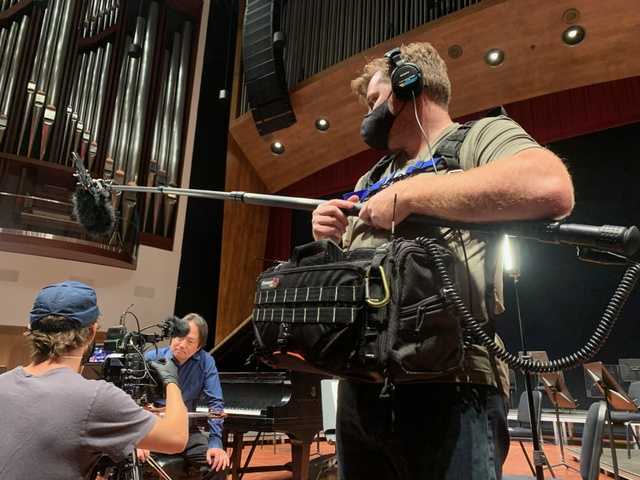Lectrosonics aids Now Hear This production
- Details

The intense travel schedule necessitates a tight crew, and Reid Mangan is tasked with recording both musical performances and dialogue. For the latter, he relies on Lectrosonics Digital Hybrid Wireless, specifically SRb and SRc receivers (slot-mounted in an SL-6 dock with a Sound Devices 688 recorder); two each of SMV, SMQV, and LT transmitters; and an HMa plug-on transmitter paired with a UCR411a receiver for occasional boom work.
“For the music performances, I’m running up to 10 channels of cabled mics and am focusing on mic placement to get an ideal sound from each instrument. And I capture dialogue at the same time,” says Mangan. “Because this is a documentary show and not scripted, we don’t get to do alternate takes if there’s a technical problem. Point being, for the dialogue, I need wireless that I can set and forget. I can’t hold a boom over someone’s head at the same time I’m doing everything else; we need whatever is happening right in front of us to come through in the moment and sound natural, with no surprises. Lectrosonics is better in that regard than any other brand I’ve ever used.”
One surprise that Lectrosonics has helped Mangan mitigate is part and parcel of world travel: frequency planning difficulties. He is quick to point out that Lectrosonics’ Digital Hybrid Wireless technology, which maximizes usable channels within a given radio frequency range, has made the process smooth sailing no matter where the show finds itself.
“We’ve filmed on three continents, including North America, Europe and Africa,” he notes. “Normally, every time you cross a border you have to put together an audio bag specifically for that country or region. That hasn’t been the case here. The receivers always lock onto open frequencies, and between Scott and his guests we’ll usually have up to four channels of wireless going, though sometimes I’ve used six.”
On the transmitter side of the equation, Mangan cites the high output power of the SMV and SMQV as a lifesaver. “We’re often shooting in buildings that are in busy city centres with tons of RF activity,” he explains. “We’ve used the 250-milliwatt mode on the SMV and SMQV more than I expected. We also like the SMV because it’s small and can be easily hidden on the talent.”
The filming conditions on Now Hear This have not presented major environmental woes so far, but Mangan has weathered them on other productions, his Lectrosonics gear never flinching.
“While shooting a documentary with an indigenous tribe in Columbia, we had hours when it was pouring, hours when it was blazing hot, all of that. The gear was getting rained on, sweaty, and dirty. At one point, someone we had miked rolled down this muddy hill and his Lectrosonics transmitter just got covered. And it kept on working, no problem.”
Now Hear This Season 2 will be returning to PBS starting on 18 September.
















